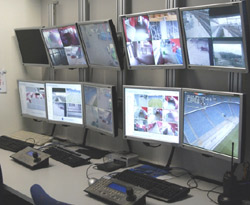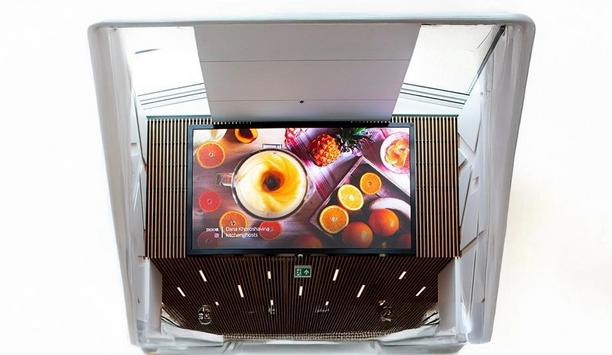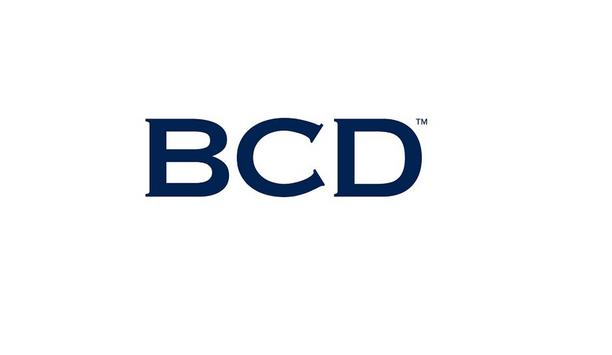Two Swiss stadiums which hosted UEFA Euro 2008 football matches in June 2008 chose to use new Geutebruck CCTV equipment for security and crowd management in and around the grounds as well as their associated retail and entertainment facilities. The hybrid systems installed by EOTEC AG in the 40,000-seater St Jakob stadium in Basle and in the 30,000-seater Letzigrund stadium in Zurich both integrated existing analogue cameras with new IP and megapixel ones, digital recording and virtual matrices to give flexibility, high functionality and efficiency.
The stadium operators chose Geutebruck because its open interfaces together with its home-grown hard- and software ensured complete compatibility within the CCTV system as well as easy connection with third-party systems such as voice-over-IP applications from Commend International. The new installations also allow staff to display live pictures on multiple screens; take individual portraits for identity purposes and archive a whole match at the touch of a button. The systems monitor themselves with built-in diagnostics and alarm systems, and use very little bandwidth because dynamic live streaming (DLS) matches the data streams flowing through the network with the image data is actually needed.
‘Dynamic live streaming' is a recent Geutebruck development which eliminates redundant data from a system. Geutebruck DSP-based CCTV platforms generate vast quantities of compressed data; they dual stream; and can vary the quality and picture rates for live streamed channels independently of the recorded ones. With the addition of DLS, the software running on the display PC gives continuous feedback to the compression hardware about what size window and what format the viewer currently requires for each channel. This enables the encoders to  continuously match the live channel picture data precisely to the needs of the current display windows. Given that control rooms normally only need 2CIF resolution for maximised windows, and CIF is usually adequate for others (or even QCIF for very small windows), automatically switching down to CIF where appropriate reduces the data volume by about 50 per cent. And switching down to QCIF delivers a further 10 to 20 per cent reduction. Over the whole system this represents a very large decrease in data without any appreciable loss of quality. Switching is fast and imperceptible, and of course the highest quality dominates if multiple PCs access the same camera.
continuously match the live channel picture data precisely to the needs of the current display windows. Given that control rooms normally only need 2CIF resolution for maximised windows, and CIF is usually adequate for others (or even QCIF for very small windows), automatically switching down to CIF where appropriate reduces the data volume by about 50 per cent. And switching down to QCIF delivers a further 10 to 20 per cent reduction. Over the whole system this represents a very large decrease in data without any appreciable loss of quality. Switching is fast and imperceptible, and of course the highest quality dominates if multiple PCs access the same camera.
DLS delivers significant infrastructure savings and better operation for users of new systems and existing installations where capacity is becoming an issue. Users make hardware savings too, because less data not only means less bandwidth, but also less processing for display servers. With DLS a single server running Geutebruck's display software on a Core2Duo processor can supply 100 screens with live MPEG4 video at 25fps.












